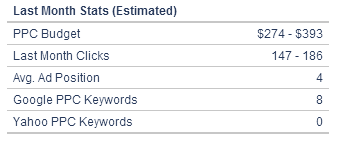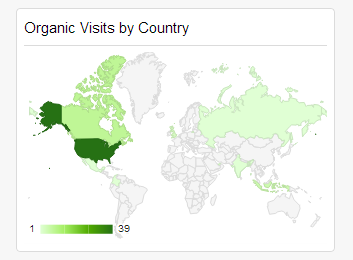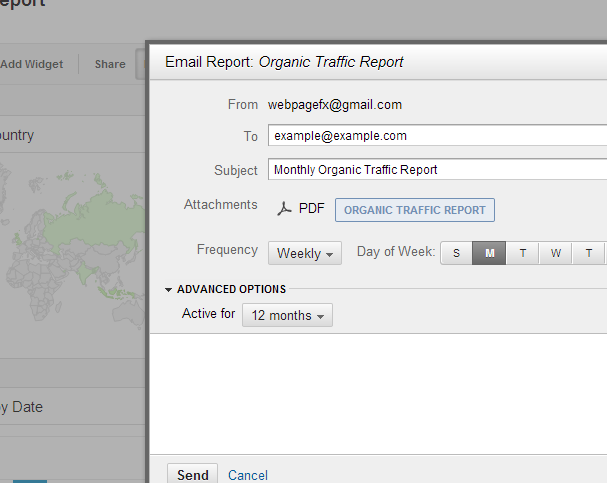
Back in December, in a blog post written by one of my colleagues, myself and a few other WebFX-ers made commitments to specific internet marketing New Years Resolutions for 2013. My resolution? To ‘experiment’ with advanced analytics reporting techniques for more useful and leads-driven data. In a nutshell, my resolution touches on one very obvious analytics topic: user segmentation.
While my goal highlights an entire baseline of the Google Analytics system (custom reporting), the underlying focus all along was to better manage my data. Since declaring my resolution, my goal has been to delve a little deeper into Analytics each day to learn something new. And isn’t the point of our work as marketers anyway?
While website reporting and analysis comes in the form of aggregate data (number of visits, average visit duration, etc.), user segmentation allows you to understand the behavior of segments of your customers, providing you the ability to form actionable insights by focusing on the ‘specifics’ rather than the ‘whole.’ Are you interested in better managing your data? Here a few best practice tips to help you get started with user segmentation:
Get to Know Your Industry First Before Anything Else
Although this is pretty obvious, as an Internet marketer, your job is to best understand the industry you’re competing in and how that competition fits within your business goals and objectives. Doing some initial research will ultimately help you find answers through analytics strategies.
Finding the answers to these initial questions will set the stage for your appreciation and understanding of how analytical data can help grow your business. Look before you leap. Understand your market and the trends that influence your business.
A good starting point would be to check what your competitors are doing, and plan to do it better! Example: If you find yourself questioning a viable budget for a pay-per-click campaign, services like Alexa or SEM Rush allow you receive competitors’ data by inputting their web address. While it’s likely that this data is not 100% accurate, the research does provide a nice starting block for meeting your objectives in future opportunities.

Gather Your Data and Begin ‘Clustering’
After you’ve defined your business’ goals and their need for segmentation techniques to meet those goals, it’s time to begin doing the dirty work by gathering and segmenting the data, which involves a technique called ‘clustering.’ Clustering involves generating data segments to produce powerful information that can be acted upon.
Clusters allow us to identify customers that have similar purchasing intentions, site interactions, regional visitation and other behaviors, to name a few. When analyzing segmented data, be sure to note 1) if it’s providing insightful information into solving a business problem and 2) if it’s enough data to warrant an immediate change to your marketing plan, or if it’s simply one to consider for the time being. Think of clusters like a custom dashboard in Google Analytics.
By creating custom widgets that compare site metrics versus dimensions, we’re able to move past aggregate data and gain footing into new business perspectives and opportunities.

Are you noticing an increase in site traffic in other countries besides your home country? Information such as this could assist in developing a new strategy targeted to those regions separately, possibly via a language component built into your website or a custom email marketing campaign.

Keep Your Data Fresh and Up-To-Date
As you begin using the data you’ve gathered to make executive business decisions, increased demand from your superiors for more data will require you to keep all information up to date and accurate. In certain industries, new products are launched everyday and site traffic trends are bound to change over time.
To keep your segmentation model up to date, streamline your operational process by clustering new data on a regularly basis to fit within the scope of your project (i.e., weekly, bi-weekly, monthly). Example: Set up an email option in Google Analytics that will send you a new traffic report within a specific frequency (see image below). Overall, systematic reviews of new data sets will keep the analytical wheels turning to continue to improve on the business decision process.

Find Value for Business Opportunities
Now that you’ve defined the objectives, gathered and segmented data on a regular basis, it’s time to provide the underlying value of your efforts.
What you do with the data, i.e., how innovative you are at using the information you gather, will serve as a means to helping business individuals act upon insights that would otherwise be difficult to piece together.Through segmentation strategies, marketers are better able to understand the needs and wants of their consumer, making these data-driven insights that much more real to those who need to use them. Provide data that can be readily understood and acted upon. Example: If you find that 75% of your sales or leads are coming from organic traffic in a particular region in the United States, show upper management how it will be more beneficial for you to rethink the business’ existing PPC strategy and switch it up for a new strategy (possibly SEO) to influence more business in that region, and hopefully beyond.
Finding new business opportunities through segmentation conveys expertise in your job, true attention to detail, and of course, added value for the business.
Now Get Out There and Being Analyzing
While this blog post doesn’t cover all of the immense capabilities that user segmentation can provide for many different marketing campaigns, it does highlight some important tips to consider when analyzing data sets. Because it is truly advanced analytics, be sure to be mindful of your own abilities in this area and do your research before taking a gander. Feel free to consult this article for more background into the world of user/behavioral segmentation.
It provides a great overview for any analytical strategy, not just for Google Analytics reporting, and is the sole inspiration for this post. All in all, the lessons you learn here can be the cornerstone for finding a balance between what your customers want and what you want to achieve for the business. In order to create this win-win situation, focus on these tips: understand and research the industry you’re working in, what are the areas of strategic focus, and then segment away!
Good luck! Photo by Matt Law
-

WebFX is a full-service marketing agency with 1,100+ client reviews and a 4.9-star rating on Clutch! Find out how our expert team and revenue-accelerating tech can drive results for you! Learn more
Try our free Marketing Calculator
Craft a tailored online marketing strategy! Utilize our free Internet marketing calculator for a custom plan based on your location, reach, timeframe, and budget.
Plan Your Marketing Budget

Looking for More?
Get expert ideas, industry updates, case studies, and more straight to your inbox to help you level up and get ahead.
"*" indicates required fields
Try our free Marketing Calculator
Craft a tailored online marketing strategy! Utilize our free Internet marketing calculator for a custom plan based on your location, reach, timeframe, and budget.
Plan Your Marketing Budget





